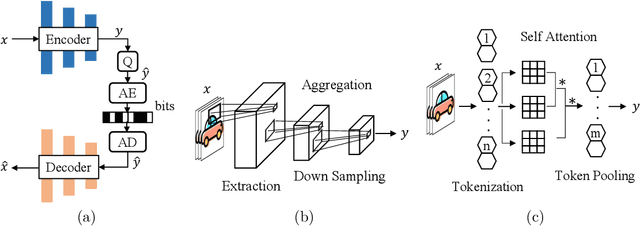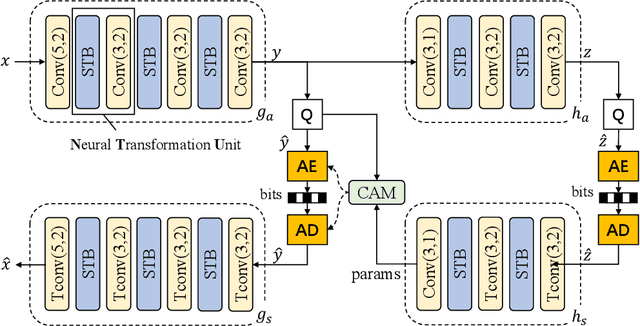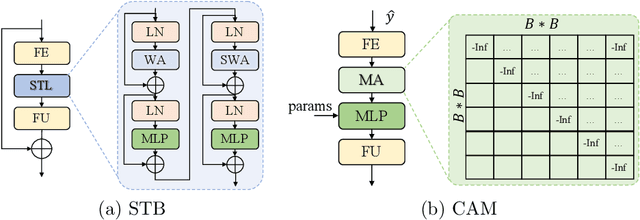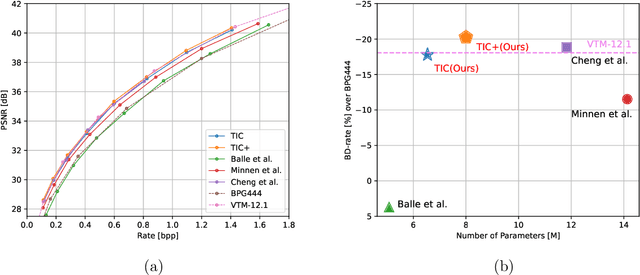Peiyao Guo
All-in-One Image Coding for Joint Human-Machine Vision with Multi-Path Aggregation
Sep 29, 2024



Abstract:Image coding for multi-task applications, catering to both human perception and machine vision, has been extensively investigated. Existing methods often rely on multiple task-specific encoder-decoder pairs, leading to high overhead of parameter and bitrate usage, or face challenges in multi-objective optimization under a unified representation, failing to achieve both performance and efficiency. To this end, we propose Multi-Path Aggregation (MPA) integrated into existing coding models for joint human-machine vision, unifying the feature representation with an all-in-one architecture. MPA employs a predictor to allocate latent features among task-specific paths based on feature importance varied across tasks, maximizing the utility of shared features while preserving task-specific features for subsequent refinement. Leveraging feature correlations, we develop a two-stage optimization strategy to alleviate multi-task performance degradation. Upon the reuse of shared features, as low as 1.89% parameters are further augmented and fine-tuned for a specific task, which completely avoids extensive optimization of the entire model. Experimental results show that MPA achieves performance comparable to state-of-the-art methods in both task-specific and multi-objective optimization across human viewing and machine analysis tasks. Moreover, our all-in-one design supports seamless transitions between human- and machine-oriented reconstruction, enabling task-controllable interpretation without altering the unified model. Code is available at https://github.com/NJUVISION/MPA.
Transformer-based Image Compression
Nov 12, 2021



Abstract:A Transformer-based Image Compression (TIC) approach is developed which reuses the canonical variational autoencoder (VAE) architecture with paired main and hyper encoder-decoders. Both main and hyper encoders are comprised of a sequence of neural transformation units (NTUs) to analyse and aggregate important information for more compact representation of input image, while the decoders mirror the encoder-side operations to generate pixel-domain image reconstruction from the compressed bitstream. Each NTU is consist of a Swin Transformer Block (STB) and a convolutional layer (Conv) to best embed both long-range and short-range information; In the meantime, a casual attention module (CAM) is devised for adaptive context modeling of latent features to utilize both hyper and autoregressive priors. The TIC rivals with state-of-the-art approaches including deep convolutional neural networks (CNNs) based learnt image coding (LIC) methods and handcrafted rules-based intra profile of recently-approved Versatile Video Coding (VVC) standard, and requires much less model parameters, e.g., up to 45% reduction to leading-performance LIC.
Non-local Attention Optimized Deep Image Compression
Apr 22, 2019



Abstract:This paper proposes a novel Non-Local Attention Optimized Deep Image Compression (NLAIC) framework, which is built on top of the popular variational auto-encoder (VAE) structure. Our NLAIC framework embeds non-local operations in the encoders and decoders for both image and latent feature probability information (known as hyperprior) to capture both local and global correlations, and apply attention mechanism to generate masks that are used to weigh the features for the image and hyperprior, which implicitly adapt bit allocation for different features based on their importance. Furthermore, both hyperpriors and spatial-channel neighbors of the latent features are used to improve entropy coding. The proposed model outperforms the existing methods on Kodak dataset, including learned (e.g., Balle2019, Balle2018) and conventional (e.g., BPG, JPEG2000, JPEG) image compression methods, for both PSNR and MS-SSIM distortion metrics.
 Add to Chrome
Add to Chrome Add to Firefox
Add to Firefox Add to Edge
Add to Edge